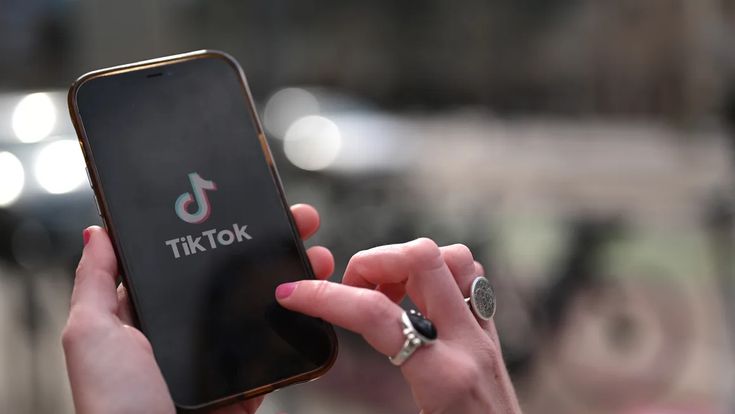Table of Contents
ToggleTikTok Now Lets Users Send Voice Notes and Images in DMs

TikTok has quickly become one of the most influential social media platforms in the world. Known primarily for its short-form videos and viral trends, the app has steadily been expanding its features to keep users engaged. One of its latest updates is the ability for users to send voice notes and images in direct messages (DMs). This move marks a significant step toward transforming TikTok into a more comprehensive social and communication platform, beyond just video sharing.
The Evolution of TikTok’s Messaging System

When TikTok first launched, its messaging options were very limited. Users could only send text-based messages, emojis, and video links. Over time, TikTok recognized the need to enhance private interactions, since many users were using the platform not just to consume content, but also to connect with friends, creators, and communities.
Introducing voice notes and image sharing now puts TikTok’s messaging closer to platforms like Instagram, WhatsApp, and Snapchat. Instead of being restricted to text, users can now express themselves in richer, more personal ways.
Voice notes, for example, allow a level of nuance and emotion that text alone can’t capture. Similarly, images provide a way to share moments, reactions, or even memes instantly. These tools give TikTok users a more dynamic communication experience without needing to leave the app.
Why Voice Notes Matter

Voice notes have been growing in popularity across messaging platforms. WhatsApp and Telegram users, for instance, rely heavily on them for quick conversations. Voice messages allow people to express tone, laughter, or emotion that may otherwise be lost in text.
On TikTok, this feature could become particularly powerful. Creators can interact with followers on a more personal level. Friends can share reactions in a fun, expressive way. Even casual users can benefit by saving time when typing isn’t convenient.
For many, sending a voice note feels more intimate and authentic than typing out a sentence. TikTok’s decision to integrate this feature shows that it understands modern communication habits and wants to keep up with the way people prefer to connect.
Why Image Sharing Is a Big Deal
Until recently, TikTok’s DMs lacked the ability to send and receive pictures. This limited users to text and video links, making conversations feel a bit one-dimensional. By adding image sharing, TikTok unlocks a new layer of interaction.
Users can now send screenshots, memes, reaction photos, or personal pictures directly within the app. This can help creators engage with fans, allow groups of friends to plan events, or simply make chatting more fun.
More importantly, this makes TikTok more competitive with rivals like Instagram and Snapchat, which have long relied on visual messaging as a core part of their user experience.
Building a Full Social Ecosystem
This update reflects a larger trend: TikTok’s ambition to become more than just a video-sharing platform. By investing in DMs and communication features, TikTok is positioning itself as a complete social ecosystem.
- For creators, this means deeper engagement with fans through private messages.
- For brands, it opens the door to more personalized marketing and customer service interactions.
- For everyday users, it makes TikTok a one-stop app where they can watch, create, and chat without needing to switch between multiple platforms.
If TikTok continues to strengthen its messaging tools, it could start to compete not only with YouTube and Instagram, but also with messaging-centric apps like WhatsApp, Messenger, and Snapchat.
The Impact on User Behavior
Adding voice notes and images will likely change how users behave on TikTok. Instead of only reacting to videos publicly with comments or likes, people may prefer private conversations with friends and creators. This could foster a more personal sense of community within the app.
It might also encourage longer app usage. When people have richer messaging features, they tend to spend more time inside the platform. Instead of watching a few videos and leaving, users could get pulled into private conversations, making TikTok even more addictive.
However, there are potential challenges as well. TikTok will need to manage safety concerns, especially around inappropriate image sharing. As with any social platform, moderation and privacy controls will be key to keeping users safe.
Privacy and Safety Considerations
While these new features are exciting, they also raise important privacy and safety questions. TikTok has previously faced criticism regarding how it handles user data and content moderation.
With the addition of image sharing, there is a risk of misuse—such as spam, harassment, or the sharing of harmful content. TikTok will likely need to strengthen its reporting tools, AI filters, and parental controls to ensure the platform remains safe, especially for younger users who make up a large part of its audience.
Voice notes could also pose challenges, such as spreading misinformation or inappropriate content that is harder to monitor than text. Ensuring that moderation systems can handle these new formats will be essential for TikTok’s long-term success.
What This Means for the Future of TikTok
This update makes one thing clear: TikTok is no longer satisfied with being just a video app. It is actively evolving into a multi-purpose social media platform. With every new feature, it becomes more competitive with established giants like Meta, Snapchat, and even messaging apps like WhatsApp.
Looking ahead, TikTok may continue to add features that enhance private interactions, such as disappearing messages, group audio chats, or even integrated video calling. Each of these steps would further entrench TikTok as an app people use for every aspect of digital communication, not just entertainment.
Final Thoughts
The introduction of voice notes and image sharing in TikTok DMs may seem like a small update, but it has big implications. It enhances how people connect, makes conversations more expressive, and positions TikTok as a stronger competitor in the social media landscape.
By making its messaging system more engaging, TikTok is ensuring that users spend more time on the platform—and that they rely on it not only for videos and trends, but also for day-to-day communication.
As always, the success of this feature will depend on how TikTok balances user freedom with privacy and safety protections. But one thing is clear: TikTok is steadily transforming itself from a short-video platform into a complete digital ecosystem where people can create, share, and now, communicate in richer ways than ever before.





